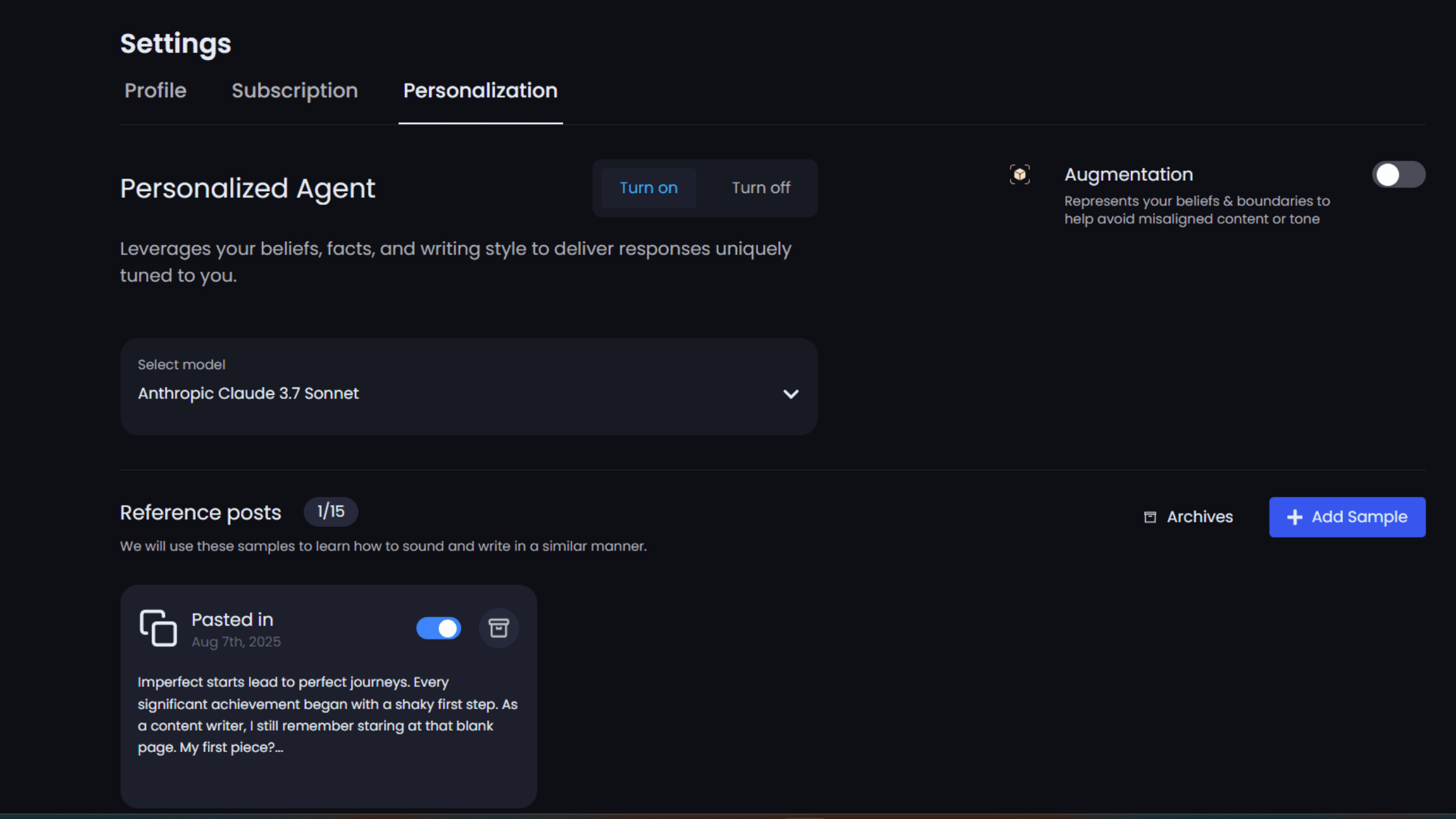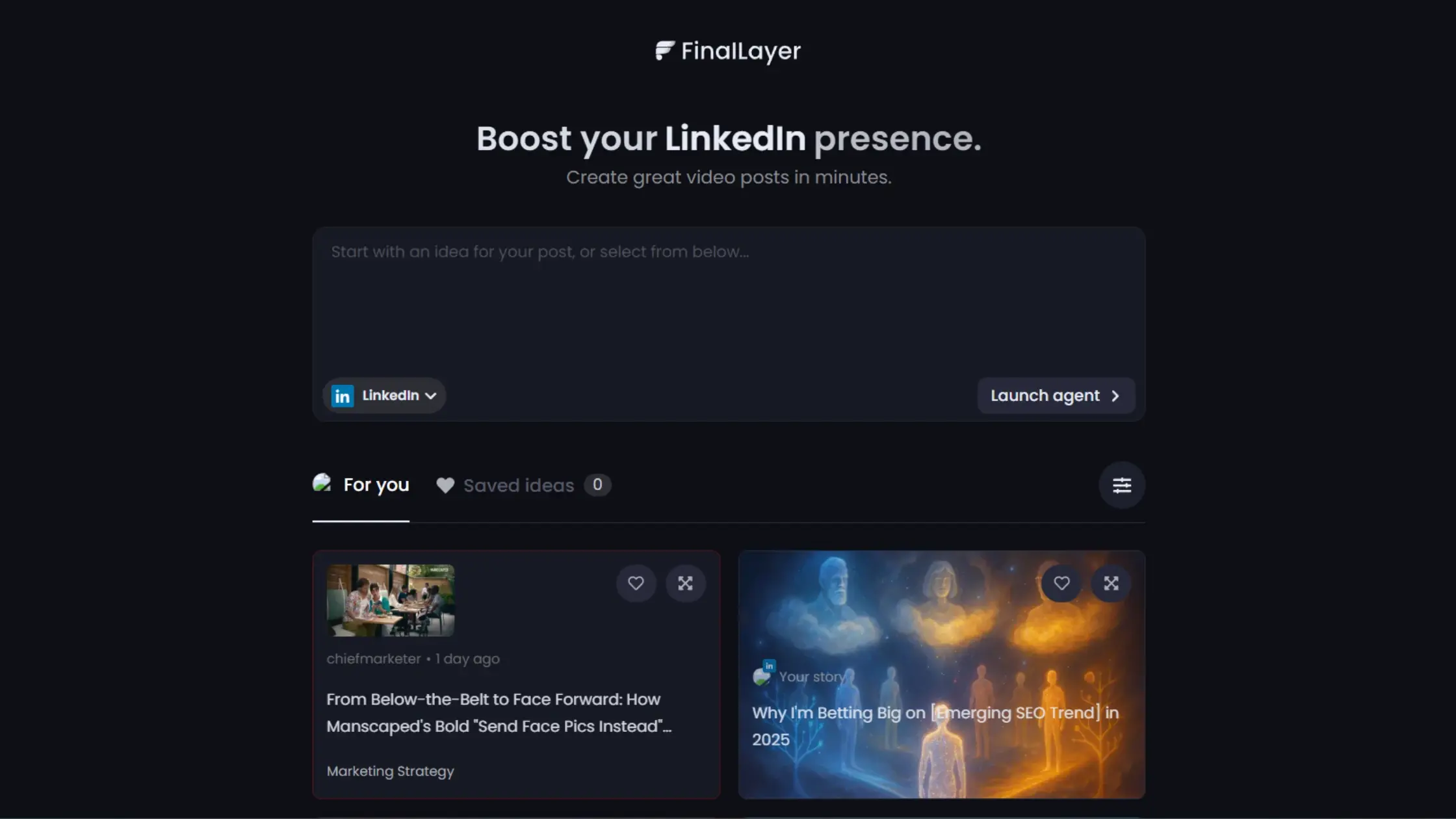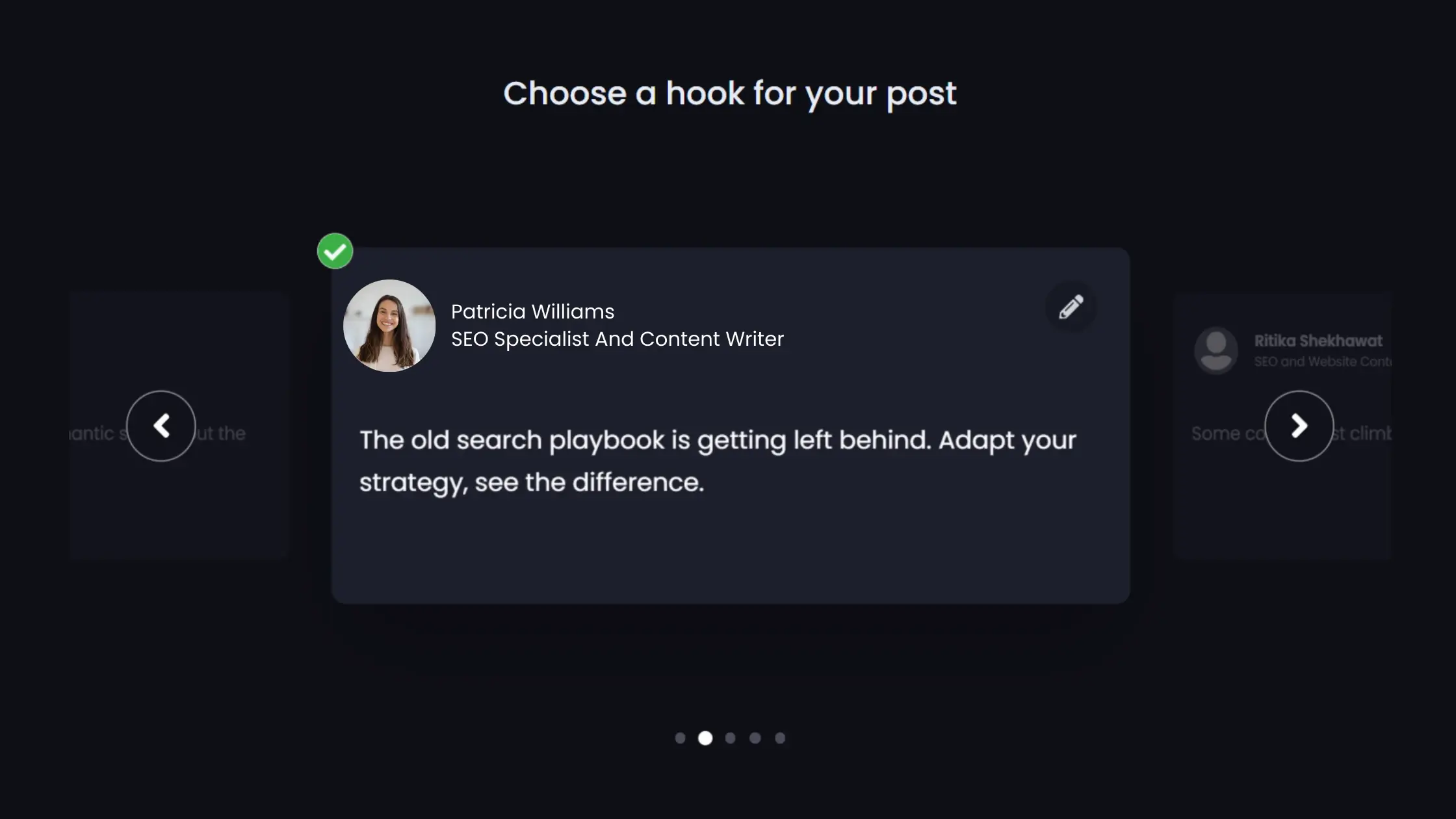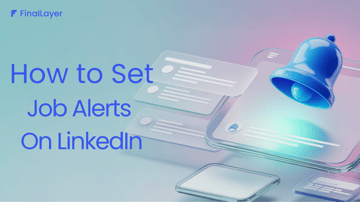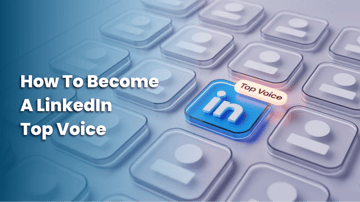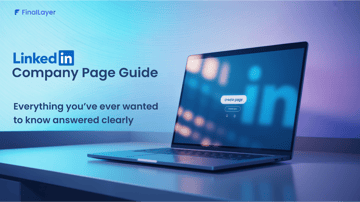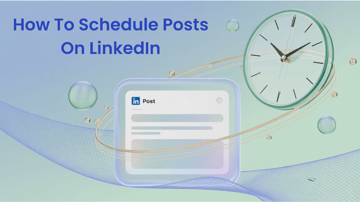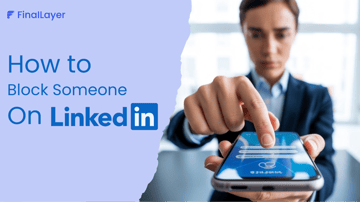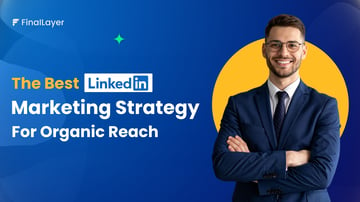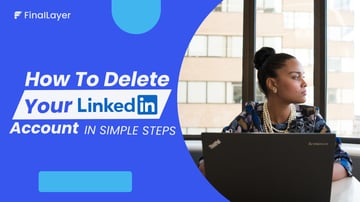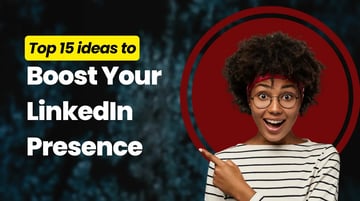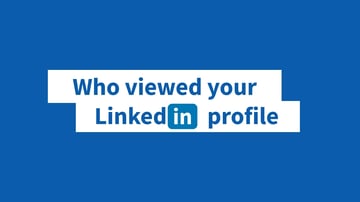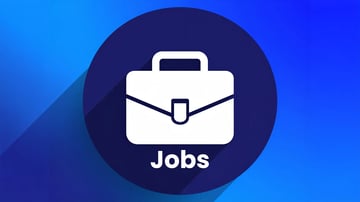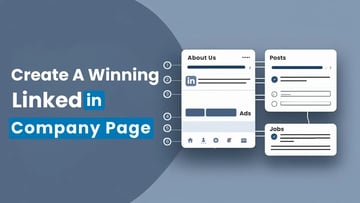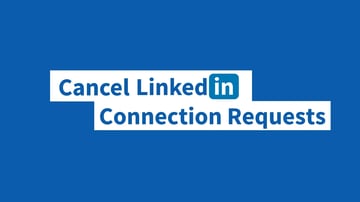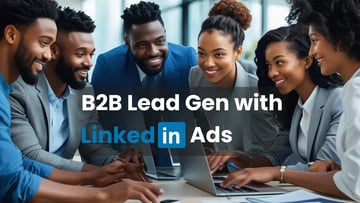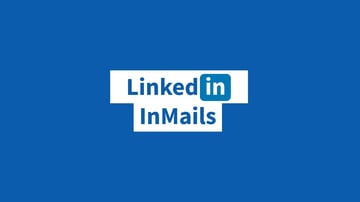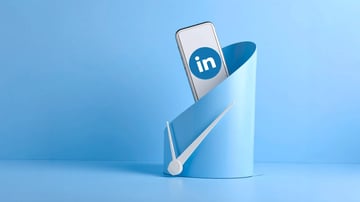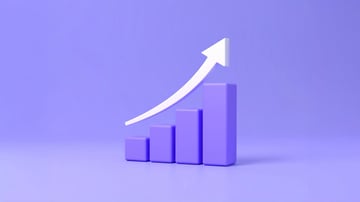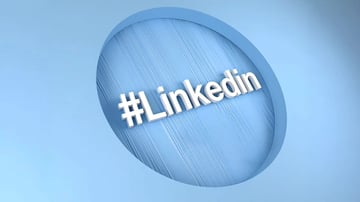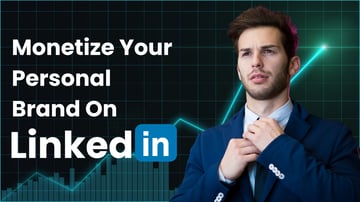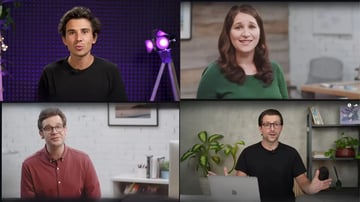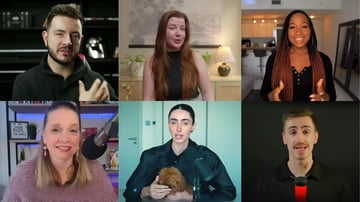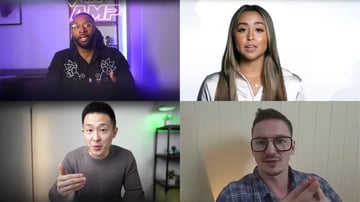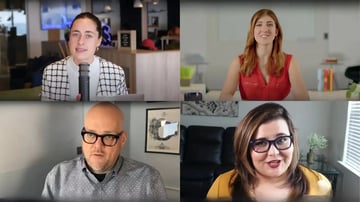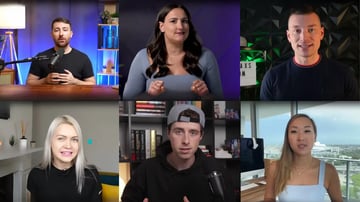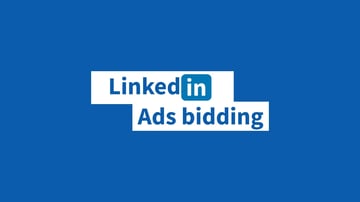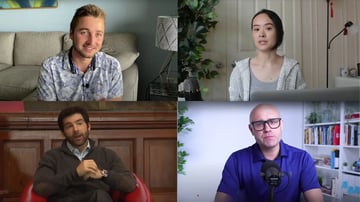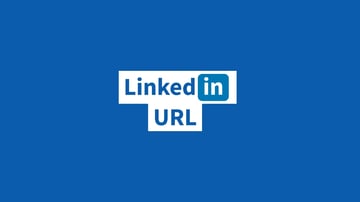There's a noticeable trend of individuals focusing on their LinkedIn profiles rather than other social media accounts. LinkedIn has become a must-have for anyone serious about their career, as it connects them with professionals worldwide.
But with millions of posts posted every day, how does LinkedIn decide which content to show to users? The answer lies in its algorithm. Understanding how the LinkedIn algorithm works and the factors influencing it is crucial if you want to get noticed.
Knowing how LinkedIn's algorithm works benefits business professionals, content creators, and job seekers by improving post reach and impact.
In this blog, we’ll analyze what affects content visibility on your feed, how the algorithm works, and how you can boost your success on LinkedIn.
What Is the LinkedIn Algorithm?
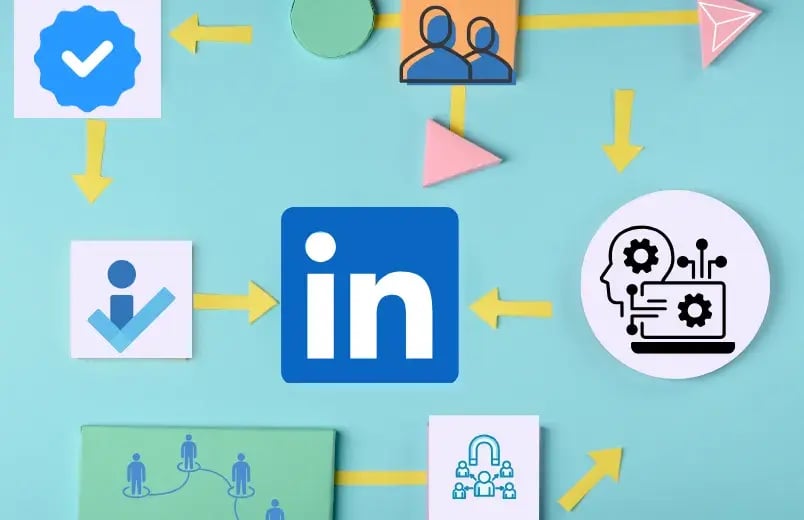
LinkedIn's algorithm helps users find valuable professional connections and insightful content by determining what appears in their feeds. By understanding how this algorithm works, LinkedIn users can maximize their visibility on LinkedIn.
One of the key features of the LinkedIn algorithm is that it focuses on professional content. In contrast to other social media platforms that prioritize entertainment or personal content, LinkedIn aims to deliver posts that are relevant to users' professional lives, career growth, and industry trends.
The algorithm considers several factors to decide which posts will appear in a user’s feed, ensuring that content aligns with their professional interests and goals.
How Does the LinkedIn Algorithm Work
Understanding the LinkedIn algorithm is important to know what to post. LinkedIn is a professional networking platform, and its algorithm has been developed to prioritize relevant, engaging, and valuable content for users in a professional context. It determines what appears in users' feeds based on several factors, assuring that the content displayed is aligned with their area of expertise, interests, and career goals. Here’s an overview of how the LinkedIn algorithm works:
1. Content Relevance
The algorithm analyzes a post's relevance to a user’s interests, considering factors such as the user’s industry, connections, interests, and engagement history.
For example, if you continuously engage with posts related to marketing or technology, the algorithm will show you more content that aligns with those topics. This ensures that users are shown posts that are professionally relevant and insightful.
2. Engagement Signals
Engagement is a main factor in determining how the LinkedIn algorithm ranks posts. Posts that receive quick engagement, such as likes, comments, and shares, are more likely to be shown to a broader audience.
The algorithm values interactions that describe a post’s relevance, especially those from people in the user’s network. Content that encourages conversations (such as debates, insightful comments, or thought-provoking discussions) will often receive more visibility.
3. Personalization of Content
Struggling to maintain a consistent professional voice across LinkedIn posts? The FinalLayer LinkedIn Super Agent determines your professional brand personality and voice, and represents you consistently across all LinkedIn posts. Try FinalLayer now.
The algorithm personalizes users' feeds based on their activity. This includes the types of posts they interact with, the people they are connected with, and the groups they are members of.
By tracking user behavior, the algorithm helps users discover content that is most relevant to their professional interests. This means users will see content related to their career interests, industry trends, and networking opportunities.
4. Post Type and Format
The LinkedIn algorithm favors various types of content based on engagement potential. For instance, videos and images typically have higher engagement rates, which results in more visibility.
Articles, status updates, and shared links also play an important role. Still, posts that provide professional value, such as industry insights, helpful tips, or success stories, tend to do well compared to other posts.
5. Timing and Recency
The algorithm places a strong importance on time sensitivity. Recent posts are more likely to appear in a user’s feed, especially when they generate early engagement. However, if a post continues to receive likes and comments over time, it can resurface, allowing for ongoing visibility even after its publication.
6. User Behavior
The more a user engages with a particular content or creator, the more likely the algorithm will show similar content in their feed. For example, if a user frequently comments on posts about leadership or shares posts from specific influencers. In that case, the algorithm will consider these interests and focus on showing similar content.
7. Professional and Insightful Content
LinkedIn prefers posts that are professional and helpful. Unlike other social media platforms that focus on entertainment or personal posts, LinkedIn aims to provide content that supports users’ professional growth, career development, and industry knowledge. Posts that provide value, share expertise, or spark meaningful discussions are more likely to be prioritized.
Key Factors That Influence LinkedIn Reach
Several key factors influence the reach of your content on LinkedIn. Understanding these factors can help you optimize your posts to ensure they get maximum exposure. Here’s a breakdown of the main elements that impact LinkedIn's reach:
1. Engagement Rate
Engagement with your content is one of the most important factors in determining LinkedIn reach. When your post gets likes, comments, and shares, it signals to the algorithm that the content is relevant and engaging for the audience.
Early engagement from your network boosts the post’s chances of appearing in the feeds of a wider audience. Posts that spark conversations or receive high interaction early on are more likely to continue to spread.
2. Post Timing
Timing is crucial when it comes to reach. Posting when your audience is most active on the platform increases the likelihood that they will see your content. Weekdays during business hours (morning to early afternoon) are the best times to post for LinkedIn reach. However, it is also necessary to consider your specific audience and test different times to find what works best for you.
3. Content Type and Format
The type of content and format of your post plays a vital role in influencing the reach of your posts. Posts with videos, images, and media tend to get more engagement than text-only posts.
The LinkedIn algorithm puts multimedia content over text-only posts, which gets lower engagement, which means posts with videos, infographics, and photos are likely to have a wider reach compared to plain text.
4. Relevance to Your Audience
The content you share with your audience should resonate with them. If the content is among your audiences’ interests, it is more likely to be shared, get comments, and be engaged with. The LinkedIn algorithm personalizes users' feeds based on their professional interests, connections, and industry, so posts that align with these factors tend to have higher reach. Sharing industry news, thought leadership or valuable professional insights is more likely to catch the attention of your connections.
5. Hashtags
Hashtags help categorize your content and make it discoverable to a broader audience. When used effectively, hashtags increase the likelihood of your posts appearing in searches and relevant feeds. It’s important to use both popular and niche hashtags that are relevant to your content and target audience.
6. Consistency and Frequency
Posting regularly and maintaining a consistent content schedule and posting frequency are important in building momentum on LinkedIn. When you post frequently, you will show up in your audience’s feeds and also on the feeds of people who resonate with the same content.
However, quality is just as important as quantity—make sure that your posts offer value and insight rather than just posting for the sake of it.
7. User Interactions and Connections
The more engaged your network is with your content, the higher your LinkedIn reach will be. Posts shared or liked by people in your network will appear in the feeds of their connections, which increases your content’s visibility. Expanding your network, especially with people in your industry or relevant fields, can help increase your reach over time.
8. Engagement with Other Posts
Your engagement with other people's content can influence your reach. By commenting, liking, and sharing relevant posts from other users, you can increase your content engagement. This develops a reciprocal relationship between users and increases the visibility of your content.
9. Paid Promotion
While organic reach is important, using LinkedIn’s paid promotion options will also expand your reach. Sponsored posts, email campaigns, and other advertising forms can get your content a broader targeted audience and increase engagement.
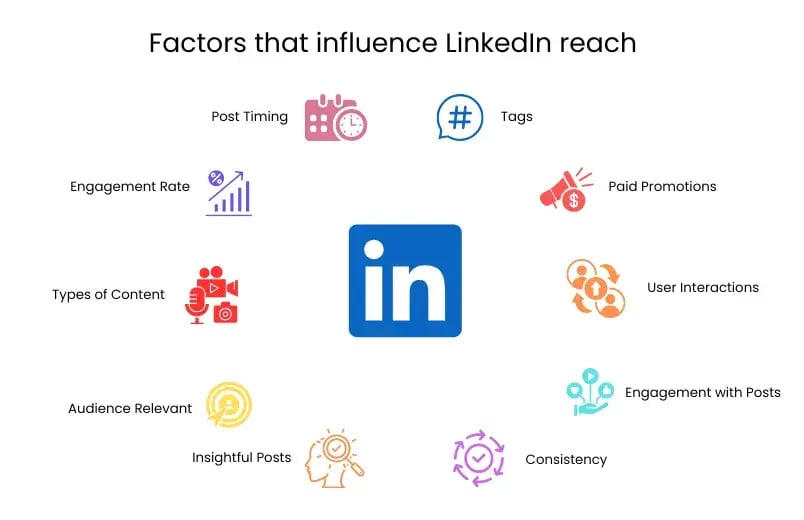
Optimizing Your LinkedIn Content for Maximum Reach
To optimize your LinkedIn content for maximum reach, you need to design your posts in a way that aligns with LinkedIn's algorithm while engaging your professional audience effectively. To enhance your LinkedIn reach:
1. Create High-Quality, Professional Content
Share your insights about the topic by creating a LinkedIn post
What are the secrets to LinkedIn algorithm success?
You will have a chance to edit later
High-quality posts are more likely to perform well on LinkedIn. Content that provides value—whether it's industry insights, career advice, thought leadership, or actionable tips—resonates most with users. The more relevant and beneficial your content is to your audience’s professional growth, the more likely they are to share and engage with it.
Tips:
- Focus on sharing your expertise and knowledge.
- Offer value through case studies, success stories, or educational content.
- Keep the tone professional but also approachable.
2. Leverage Multimedia Content
Create LinkedIn Video Posts Without Hassle
FinalLayer's Video Search Agent finds relevant video clips
for your post from your library or YouTube.
The LinkedIn algorithm gives priority to content that incorporates multimedia, such as videos, images, and infographics. Visual content tends to drive higher engagement because it grabs attention quickly and is easier to digest.
Tips:
- Share short, impactful videos that offer insights or showcase your expertise.
- Use high-quality images and graphics that complement your post’s message.
- Try experimenting with different formats (e.g., carousels and slide decks) to keep your content varied and engaging.
3. Use Hashtags Effectively
Hashtags help categorize your content, making it easier for people interested in certain topics to discover your posts. Use a mix of popular and niche hashtags that are relevant to your audience and industry.
Tips:
- Use 3 to 5 hashtags per post to increase discoverability.
- Include industry-specific hashtags to attract a targeted audience.
- Research trending hashtags in your field to ensure you tap into relevant conversations.
4. Engage with Your Audience Early
The LinkedIn algorithm values posts that receive early engagement. The more likes, comments, and shares your post gets in the first few hours, the more likely it is to be seen by a broader audience. Responding to comments and making conversations in your posts can help improve your post's visibility.
Tips:
- Encourage comments by asking open-ended questions in your posts.
- Respond to comments quickly to keep the conversation going.
- Tag people when appropriate, especially those who might add value to the discussion.
5. Post Consistently
Consistency is key to building a strong presence on LinkedIn. By posting regularly, you can stay visible in your audience's feeds and increase the likelihood of your content getting seen. However, always prioritize quality over quantity.
Tips:
- Aim for 2-3 posts per week to stay top-of-mind with your audience.
- Create a content calendar to plan your posts and ensure a steady flow of content.
- Mix up your post types to keep things fresh (e.g., articles, quick tips, infographics).
6. Post at Optimal Times
Posting at times when your audience is most active can increase the chances of your post getting noticed and engaged. The best times to post on LinkedIn are typically during weekday business hours, especially in the morning and early afternoon.
Tips:
- Experiment with different posting times to see when you get the most engagement.
- Monitor analytics on your posts to determine the best times for your audience.
- Avoid posting too early or late in the evening when most users are offline.
7. Craft Compelling Headlines
Without a strong hook, your best content gets scrolled past. FinalLayer writes hooks that get attention. Stay visible, skip the struggle. Try FinalLayer now.
Your post's headline or opening sentence plays a huge role in whether people stop scrolling and engage with your content. Make sure it's clear, attention-grabbing, and provides value upfront.
Tips:
- Start with a hook that piques curiosity or offers immediate value.
- Use power words like “tips,” “secrets,” “strategies,” or “guide” to convey value.
- Avoid clickbait—ensure your headline is truthful and accurately represents the content.
8. Encourage Sharing
The more shares your post gets on your LinkedIn feed, the broader its reach will be. Encouraging your audience to share your content with their network also broadens your reach among other users.
Tips:
- Include a call to action, asking your audience to share the post if they found it valuable.
- Share posts that encourage peer discussions, like asking for opinions or experiences.
- Offer content that your audience will be proud to share—such as helpful tips or industry insights.
9. Engage with Other Content
Your engagement with other people’s posts on LinkedIn can also influence your content’s reach. When you like, comment on, or share relevant posts from others, your network sees that engagement, and they’re more likely to return the favor.
Tips:
- Actively engage with content from your network, industry peers, and thought leaders.
- Provide meaningful comments that contribute to discussions rather than just liking posts.
- Build relationships by engaging authentically with others.
10. Use LinkedIn Analytics
You can monitor your posts daily to understand what works and what doesn’t for your LinkedIn posts. LinkedIn provides analytics for your post, which allows you to track data like impressions, engagement, and demographic information about who’s viewing your content.
Tips:
- Analyze which posts get the most engagement and adjust your content strategy accordingly.
- Experiment with different post formats, topics, and posting times to optimize reach.
- Look for patterns in your analytics to improve future content.
Final Thoughts
In conclusion, the LinkedIn algorithm plays a crucial role in determining which content gets seen by your audience. By understanding the key factors that influence the algorithm, such as engagement, relevance, and content type—you can strategically optimize your posts to maximize visibility and reach. You’re now better equipped to navigate the LinkedIn algorithm and use it to your advantage, ultimately boosting your professional presence on the platform.

